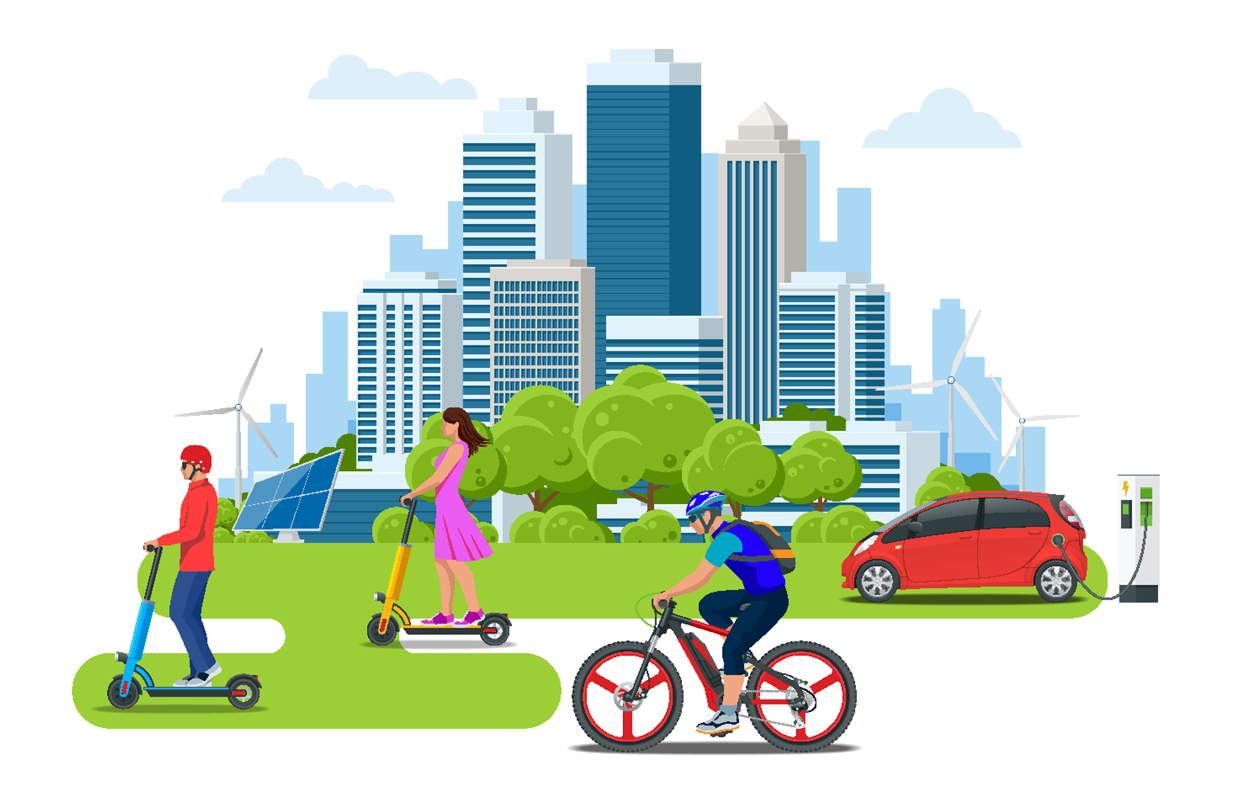
With the current climate change impacts on cities, one way to alleviate is via the LCT initiatives. Low-carbon transport initiatives can have significant development impacts by addressing environmental, social, and economic challenges.
Here are some examples of development impact in the low-carbon transport sector:
Reduced Greenhouse Gas Emissions: Transitioning from fossil fuel-based transportation to low-carbon alternatives like electric vehicles (EVs), hydrogen-powered vehicles, and public transit systems powered by renewable energy sources can substantially reduce greenhouse gas emissions. This mitigates climate change and its associated impacts, such as extreme weather events and sea-level rise.
Improved Air Quality: Low-carbon transport systems, including electric buses and bikes, reduce air pollution, leading to better air quality in cities. This can reduce respiratory diseases and associated healthcare costs, leading to a healthier population.
Enhanced Public Health: Encouraging active transportation, such as walking and cycling, not only reduces carbon emissions but also promotes physical activity. This can help combat the rising rates of obesity and related health issues, thereby reducing healthcare expenditures and improving overall well-being.
Job Creation: The transition to low-carbon transport often involves the manufacturing and deployment of new technologies, such as EVs and charging infrastructure. This can create jobs in manufacturing, research and development, and maintenance, contributing to economic growth.
Reduced Energy Dependence: Low-carbon transport relies on electricity, hydrogen, or biofuels, which can be produced domestically or sustainably sourced. This reduces a country’s dependence on imported fossil fuels, enhancing energy security and reducing trade deficits.
Increased Access to Mobility: Sustainable transport systems, including public transit and shared mobility services, can improve access to education, healthcare, and job opportunities for marginalized communities. This can reduce social inequalities and enhance the overall quality of life.
Urban Planning and Livability: Low-carbon transport encourages more efficient land use and urban planning. It promotes pedestrian-friendly cities, reduces traffic congestion, and enhances the quality of life for residents by creating more livable and walkable urban environments.
Cost Savings: Electric vehicles and other low-carbon transportation options can lead to cost savings for individuals and businesses due to lower fuel and maintenance costs. This can free up resources for other essential needs and investments.
Innovation and Technology Transfer: Investing in low-carbon transport solutions can spur innovation and technology transfer, which can have broader economic benefits beyond the transport sector. It can lead to the development of new industries and export opportunities.
Resilience to Energy Price Volatility: By diversifying energy sources for transportation, countries can reduce their vulnerability to fluctuations in oil prices, enhancing economic stability and resilience.
These examples illustrate how low-carbon transport initiatives can generate a range of development benefits, from environmental sustainability to improved public health and economic growth. Promoting sustainable and accessible transportation is crucial for addressing the interconnected challenges of climate change, urbanization, and social equity
